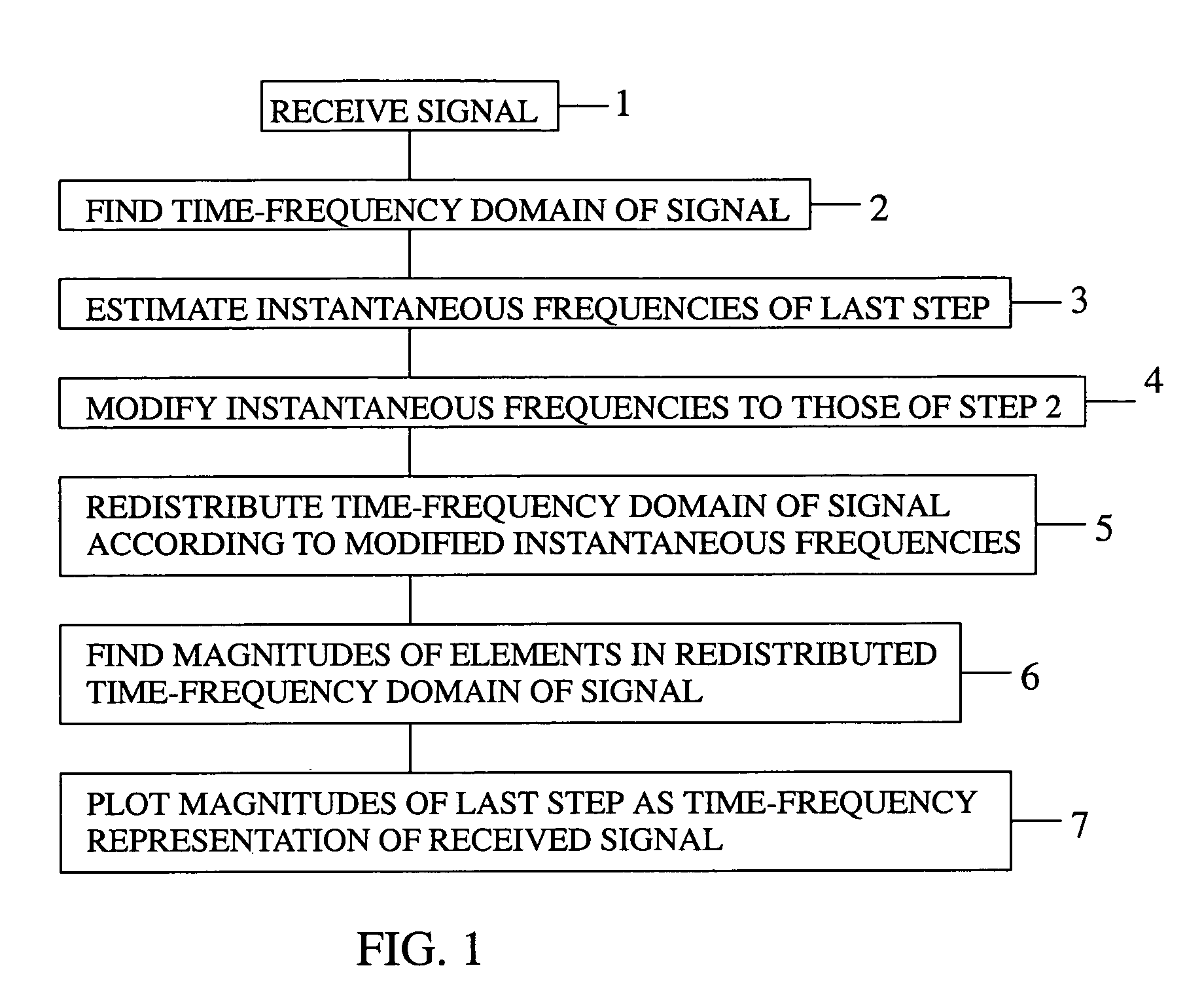Method of generating time-frequency signal representation preserving phase information
a time-frequency signal and phase information technology, applied in the field of speech signal processing, can solve the problems of difficult, if not impossible, prior art time-frequency methods to isolate individual components of signals, and distribution of non-linear quantities,
- Summary
- Abstract
- Description
- Claims
- Application Information
AI Technical Summary
Problems solved by technology
Method used
Image
Examples
Embodiment Construction
[0018]The present invention is a method of generating a time-frequency representation of a signal that preserves the phase information contained in the signal. The present invention is a novel linear time-frequency method, in which the value of a signal at any time is distributed in frequency, rather than the energy of the signal as is done in prior art time-frequency methods. The present method uses instantaneous frequencies to modify a time-frequency domain, and is linear on the span of the signal's components when the components are linearly independent. The present method produces a time-frequency representation in which the value of each signal component is distributed accurately and focused narrowly along the component's instantaneous frequency curve in the time-frequency plane, if the signal contains multiple components that are linearly independent and separable. The present invention more accurately isolates and graphs signal components than does the prior at methods, which...
PUM
 Login to View More
Login to View More Abstract
Description
Claims
Application Information
 Login to View More
Login to View More - R&D
- Intellectual Property
- Life Sciences
- Materials
- Tech Scout
- Unparalleled Data Quality
- Higher Quality Content
- 60% Fewer Hallucinations
Browse by: Latest US Patents, China's latest patents, Technical Efficacy Thesaurus, Application Domain, Technology Topic, Popular Technical Reports.
© 2025 PatSnap. All rights reserved.Legal|Privacy policy|Modern Slavery Act Transparency Statement|Sitemap|About US| Contact US: help@patsnap.com



